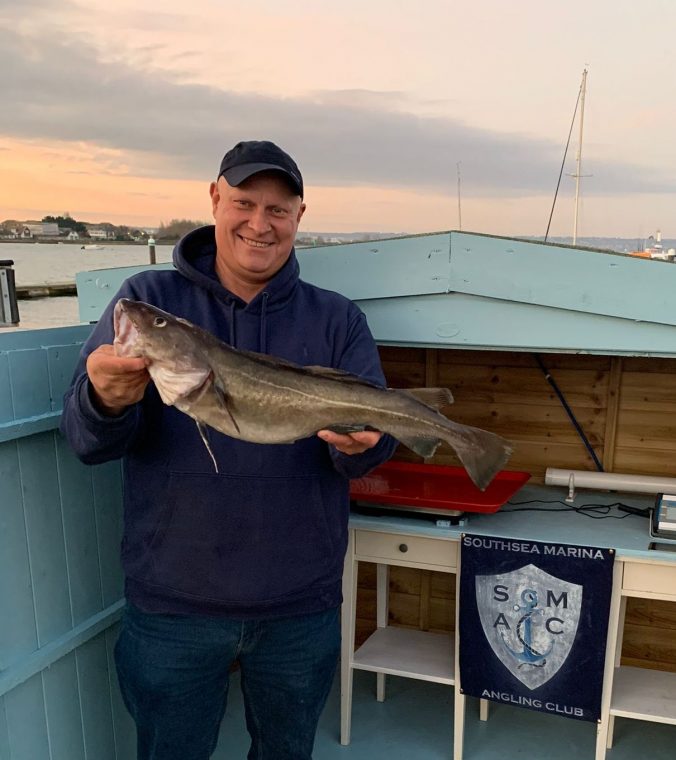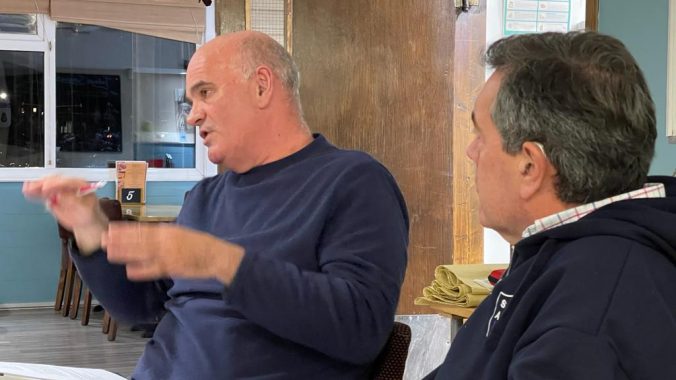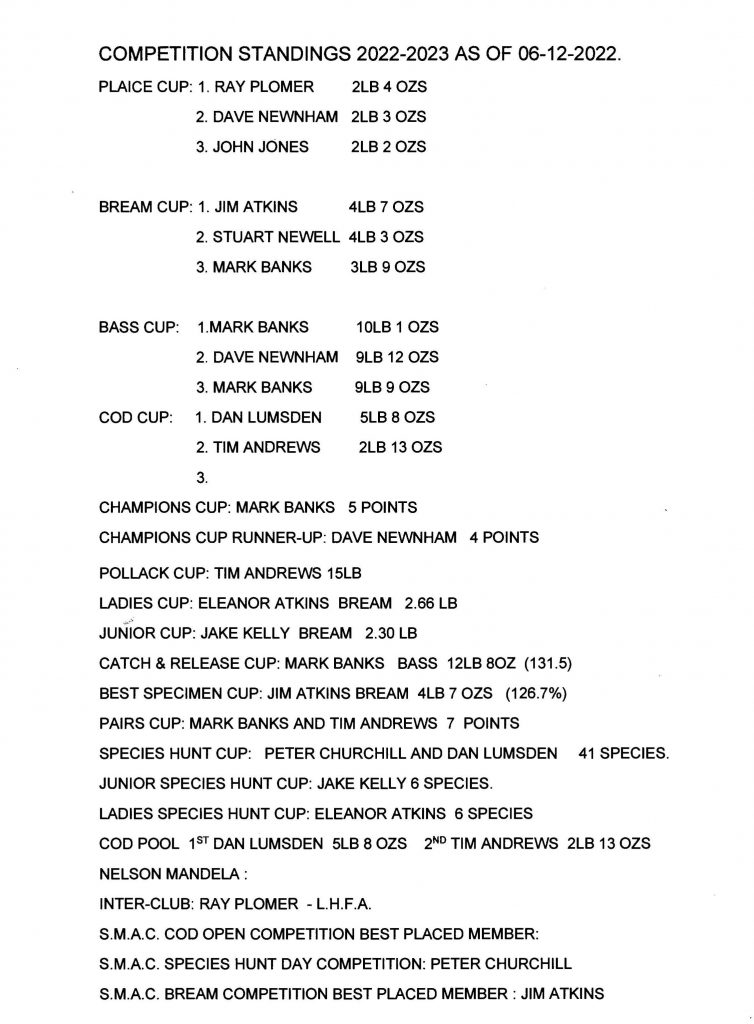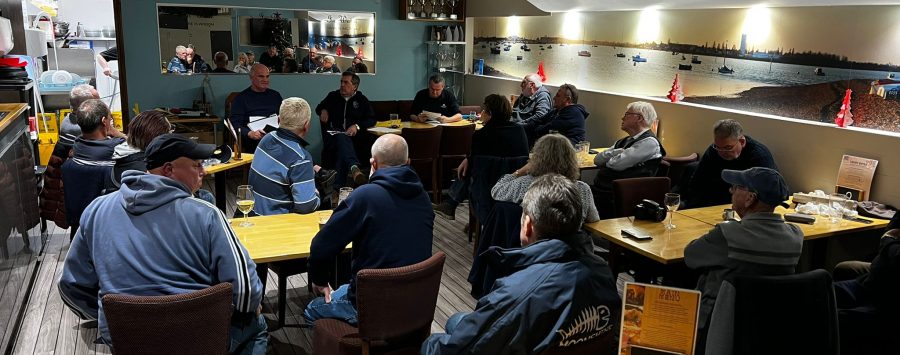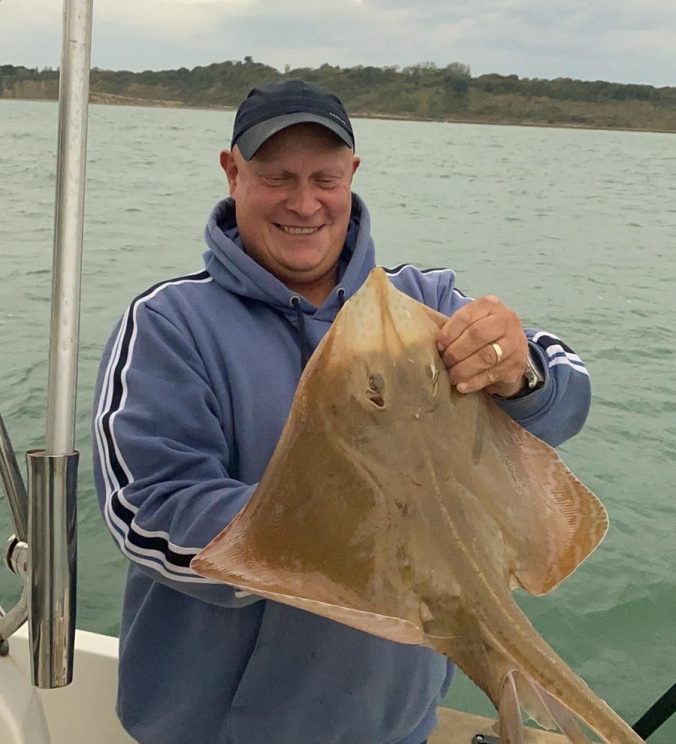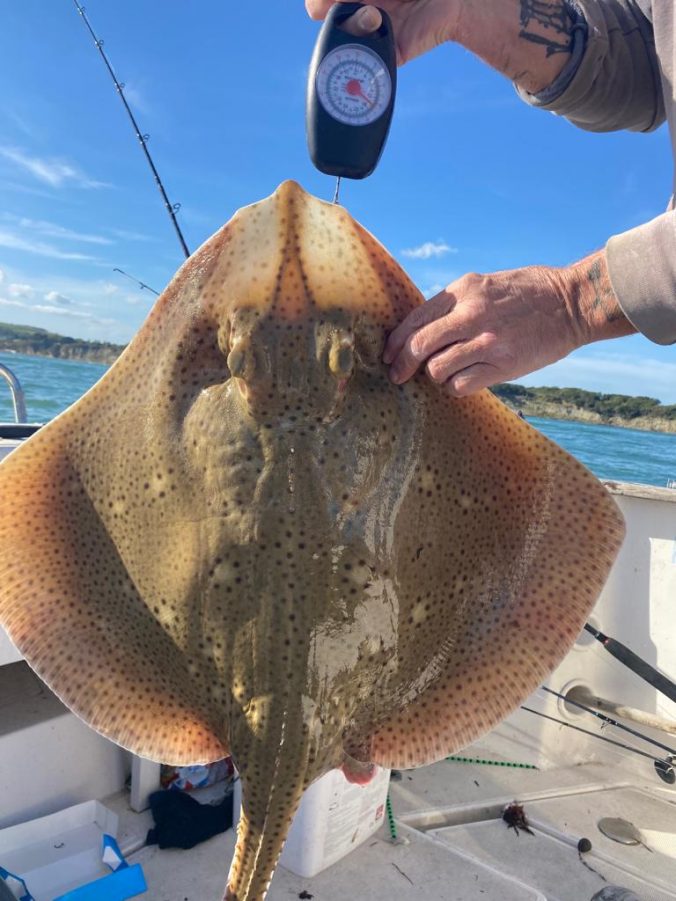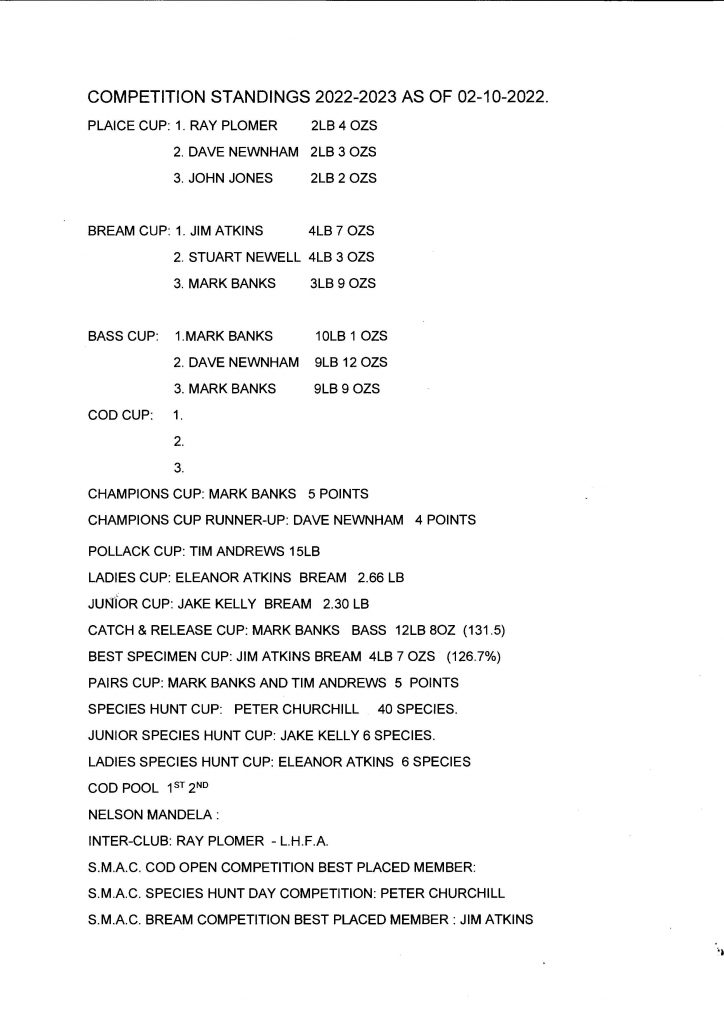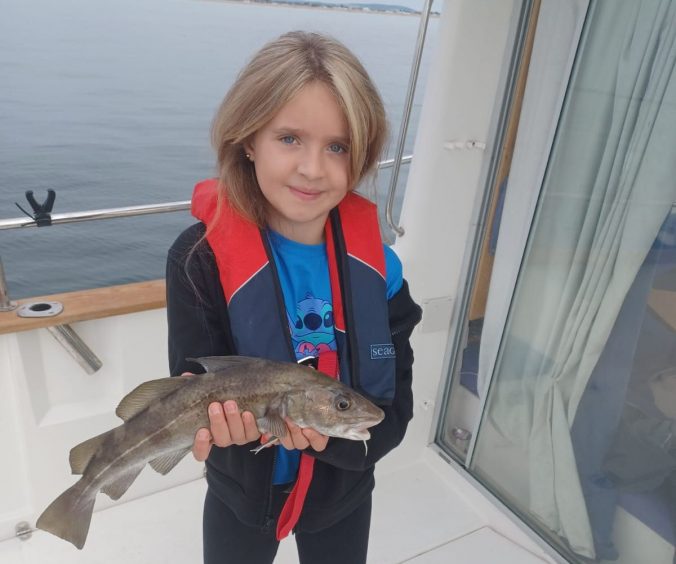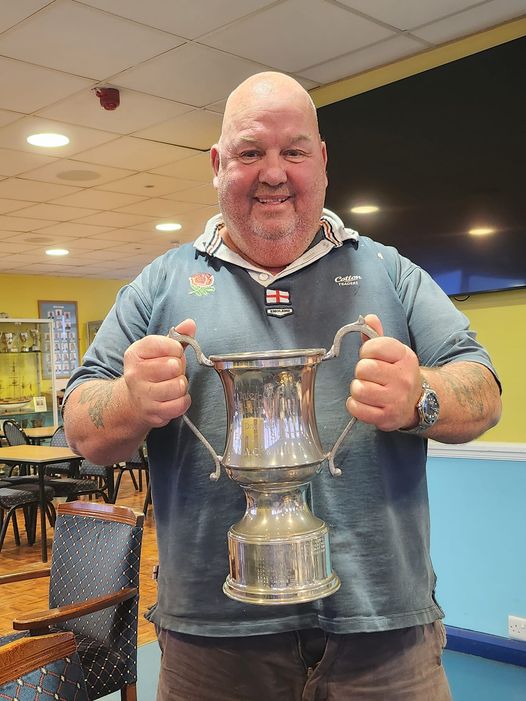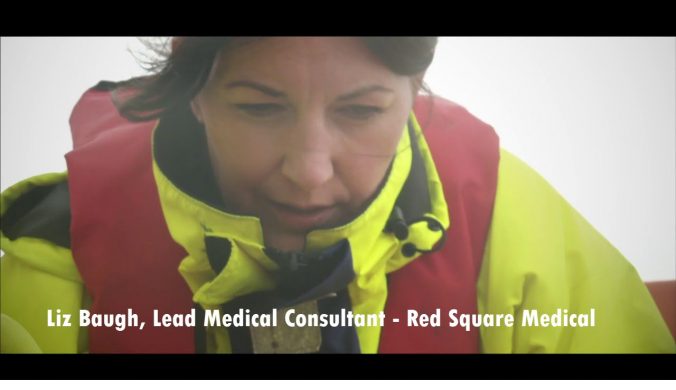Last month, one of our club members had a scary experience at sea: battery failure and a cascade of related problems which meant he was stranded alone, with dusk approaching. Chatting about this at the SMAC meeting later, we agreed that we had all had scary learning experiences over the years (heading picture: me being towed, 2008!) and decided that it would be worth an article to help people avoid getting into trouble. With colder weather, shorter days and fewer people out on the water in the winter season, this is even more important.
Every boat is different and we all have different levels of experience so I’m not going to give a list of safety equipment. Instead, I’m going to put down some key “What-If” questions that will help you create your own list of actions and equipment that will help you stay out or get out of trouble.
Taking a lesson from the Disaster Planning guys, there’s no point creating detailed scenarios to plan for because sure as eggs something will happen that isn’t on the plan. Instead, they plan for what they call “denial of service” which means regardless of the cause, how would you deal with the situation.
Modern engines are complex beasts and a breakdown at sea often isn’t something that can easily be fixed. However many problems aren’t caused by actual breakdown. The more common problems are failing to start due to battery problems; propellers snagging ropes and gear and relatively minor problems becoming a far worse situation because of an inability to summon help. Let’s deal with those in this article.
Before you set off
Before we get to the scenario planning, there are two vital safety considerations for anyone taking a boat to sea. Firstly, make sure your engine and main equipment is properly serviced by a professional to make sure it is in the best possible condition. It’s tempting to save a few pounds by doing your own servicing but a good marine engineer will spot potential problems long before they happen and that comes from years of experience, something most of us don’t have. The second is to do basic checks before starting the engine, similar to pre-flights checks that pilots carry out before taking off. These only take a few minutes but can prevent problems developing at sea. The basic checks on an inboard-powered boat that I would always carry out are as follows:
- Battery voltage: see the chart below. This needs to be measured at rest, before you start charging or putting load on the battery. Exact numbers will vary by type and make of battery and temperature, but this is a good guide. You need an accurate voltmeter for this, because you will see that a half-discharged battery still reads 12 volts!
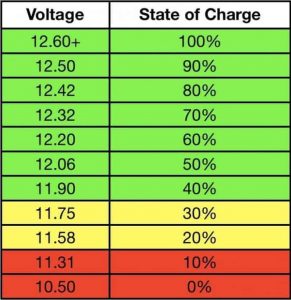
- Do a visual check on the engine and engine bay, to look for oil or water leakages. Recirculating coolant water is usually pink and so is power steering fluid so any pink in the bilge means trouble.
- Check belts for tension and wear. If they break or slip off you will lose battery charging, power steering and the cooling water pump. Make sure they are in good condition and tensioned up to specification. A rough check is not bar-tight and not flexing more than about a centimetre in either direction.
- Check recirculating cooling water level by a visual check under the water cap.
- Check oil levels in gearbox, sump and power steering if practical.
- Check that the fuel guage shows sufficient for your planned trip. Keep a log of journeys so you know roughly how much fuel is likely to have been used since the last fill-up. Fuel gauges and senders have been known to get it wrong!
- Check the operation of your fixed VHF radio, hand-held back-up radio and navigation equipment particularly plotter and lights.
- Plug your mobile phone into a charging port to make sure you have a functioning phone as a means of calling for help and basic navigation if needed.
If all is OK, start the engine and let it run and warm up for several minutes before you set off. Do another visual check of the engine bay and look for anything amiss such as the presence of steam, water or oil from the engine. Check gauges for normal operation – oil pressure, oil and water temperature and battery charging. If anything is abnormal, don’t leave the berth.
If you ever go to your boat and find the batteries are discharged, don’t be tempted to jump-start and go anyway, assuming the alternator will charge the batteries while you are travelling. The discharged battery may be the result of leaving a load on by mistake, such as a light or instrument. But it could also be the result of a failed battery or an alternator problem coming back from a previous trip. You could end up far from home, with a battery that didn’t top up on the journey.
Most people will have multiple batteries so the starter battery isn’t compromised by load on the other (domestic) systems. Traditionally you would have had a starter battery for the engine with high cold cranking amperage (CCA) and a deep cycle battery for the domestic system which is intended to be charged and discharged over time. I recommend fitting dual-purpose batteries for both starter and domestic batteries which have enough grunt (CCA) to start an engine and can also stand up to a long slow deep discharge. This means you can use your emergency crossover switch to jump start your starter battery from the domestic battery. Don’t be tempted to leave the switch open, because if you do the “bad” battery will draw down from the “good” battery and you will end up with two flat batteries not one.
When you leave the berth, keep regularly glancing at lights and gauges and listen for warning buzzers. It’s easy to be distracted by the anticipation of fishing or chatting with mates and not notice warning lights, readings and noises.
What could possibly go wrong?
This isn’t just a humorous caption, it is also a valid question that we need to run through our minds so that we aren’t caught unprepared. We can’t plan for everything of course, and the advice above will prevent a lot of engine problems from happening at sea. However, the two common causes of call-outs, battery problems and rope tangles can be anticipated and planned for. In addition, we also need to plan for these and other situations that escalate to needing to call for outside help.
Flat Battery.
In other words, you turn the starter key and there are unhappy noises from the starter, or perhaps nothing at all. There are in fact two possible causes for this: you may indeed have a flat starter battery, in which case the emergency crossover switch will help you out. I always carry a heavy duty jump starter pack in my bag which has enough power to start a big diesel engine and also has a USB power outlet to charge a phone, so if you had a fault that managed to drain both batteries you still have a third option. The other possible cause is a poor connection somewhere along the high amperage circuit (the thick cables). This creates enough resistance to give a very good impression of a flat battery, and if the battery voltage is looking good it’s worth checking the connections at the battery, switch and starter motor to make sure there isn’t corrosion on the contacts or damage to the wire next to the terminal. A quick loosen, rub with abrasive and a re-tighten will get you back in business if this is the problem.
Rope tangle.
In our crowded waters, there’s a lot of floating boat and fishing debris which can potentially jam propellors and steering gear. Sometimes they can be just below the surface such as pot ropes in a strong tide. Always treat floating objects, however small, as potential tangles so steer round them rather than over them. Unfortunately, we don’t spot them all and sometimes they are self-inflicted when our own mooring lines or anchor rope gets in the way of a propeller. On an outboard or outdrive -powered boat it is usually possible to reach the propeller somehow but the rope may be very tightly wound and will have to be cut free. You will need a suitable knife and a harness to prevent you from going over the side when you reach for the prop. That would make a bad day a lot worse.
Another tip is to carry a long-handled rope cutter. My boathook is one of those models that has an exchangeable end, so you can swap a hook, brush, net etc. I bought the cheapest end you could buy (a hook I think), discarded the hook and bolted the blade of a serrated stainless steel kitchen knife to the interchangeable part. This means that in an emergency I can remove the hook from the boathook, plug in the knife and attack the rope tangle from a safe distance.
On an inboard boat the propeller is often well out of reach under the stern and the only chance of resolving the problem is to get in the water and dive under. Only ever consider doing this if you are a good swimmer, fit, in calm water and have someone else on board. Otherwise, call for help.
Calling for help
Once you have decided that help is needed, firstly assess if you are in a safe place. If you are likely to drift into danger, put the anchor down if that is the safer option. Make a note of your Lat Long position from your chartplotter so you can direct people to your aid. You now have a number of alternatives, depending on the situation.
- If a simple tow is needed, you can radio, phone or WhatsApp club members and if someone is nearby they will come to help.
- If you have a larger boat or you are unable to summon local help, then call Sea Start. Membership is highly recommended, and they operate like the AA for the sea within their defined area of contract. A phone call is a better option for them than VHF because you can guarantee a response.
- If neither of those options are viable then call the Coastguard who will then alert the appropriate rescue service. This could be the RNLI, GAFIRS or other private rescue services that operate out of Langstone and Chichester. Use VHF if possible so they can pinpoint the location of the message broadcast. If your VHF isn’t functioning then use your phone to call 999, asking for Coastguard.
If you are in a shipping lane, alert the Coastguard to your situation so they can warn shipping of your presence and you can also tell them if you are waiting for a tow or Sea Start. Keep them informed of progress and keep monitoring Channel 16 in case someone is trying to contact you. If daylight is fading, switch on your single white anchor light. If you have a radar reflector, deploy that too.
Being stuck at sea is a scary experience but with sufficient planning it will feel much less dramatic. The human brain has a part called the amygdala which is triggered by extreme circumstances and leads to the thinking part of your brain being temporarily disabled, causing you to forget obvious things or make illogical decisions. If you have a series of back-up plans there is less likelihood that you will panic and your amygdala will continue to mind its own business.
Final thoughts
In summary, here are the key things to fit, take and do to keep safe at sea.
- Look after your boat
- Do your pre-trip checks on the batteries and engine, every trip
- Don’t take chances with batteries, fuel or warning indicators
- Have a dual battery system installed
- Have a hand-held VHF as a back-up, and keep it charged
- Take a battery jump pack with you
- Fit a 12v USB power port in the boat and use it to keep your phone charged (remember the charging cable!)
- Have a strong, serrated rope-cutting knife on board
- Have a torch on board, with spare batteries
Stay safe, and have fun. A few years ago the RNLI made a DVD called “Serious Fun” with a section for each aspect of recreational boating. It contains some useful tips and advice from the RNLI. If you can get hold of a copy, you might recognise someone in the Boat Angling chapter!
Neville Merritt
